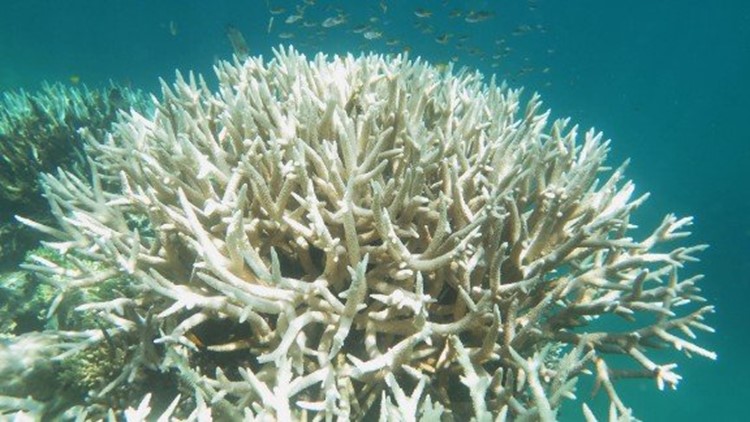A major marine heat wave in the Pacific could spell disaster for the coral reefs along the coastline of Papa Bay near Hawaii’s Big Island.
Researchers fear warming ocean waters could cause more coral bleaching, which could lead to some of the most widespread loss of coral that Hawaii has ever experienced.
Coral bleaching happens when corals are stressed by changing ocean conditions and expel the algae living in their tissues, which causes them to turn completely white. If the stress continues and the loss of algae is for a prolonged period of time, the coral will eventually die.
“Coral reefs are the most biodiverse marine ecosystems on the planet — 25% of all marine species live in association with coral reefs,” Jamison Gove, a research oceanographer for the National Oceanic and Atmospheric Administration (NOAA), told CNN. “Coral reefs provide habitat for fish that serve important ecosystem functions and provide sustenance for local people.”
In addition, coral reefs break up ocean waves and swell, creating a barrier that protects coastlines from storms, waves and flooding. They are also important to the economy in Hawaii, as vibrant coral reefs are a huge tourist attraction for divers and snorkelers.
There are concerns this marine heat wave could be even worse than a catastrophic event in 2015 that killed nearly half of the coral along this part of Hawaii’s coastline. The coral is still recovering and is thus more susceptible to thermal stress.
“Large-scale atmospheric conditions and ocean circulation, combined with local wind and current patterns, are driving the record temperatures we’ve been experiencing this year, but there is little doubt that climate change is also a contributing factor,” Gove said.
With climate change making ocean heat waves more common, the NOAA has released a 2019 coral bleaching alert.
The NOAA has advised locals and tourists to avoid killing parrotfish, surgeonfish and other herbivores, as they eat the algae that can cover and kill corals; to use reef-safe sunscreen; to keep anchors away from reefs; to dispose of chemicals like fertilizers and oils properly; to stand on sand and not on the reef; and to give the corals and fish some space.
For the first time ever, the NOAA will be monitoring the heat wave in real time via satellite. This will give researchers, officials and organizations the tools to better understand the circumstances that lead to coral bleaching, which could trigger coordinated response plans to better help protect the coral reefs.



